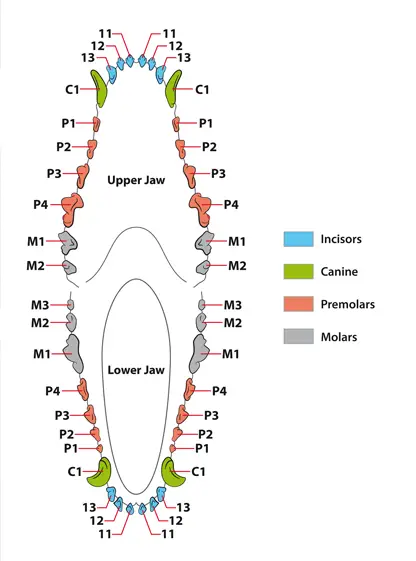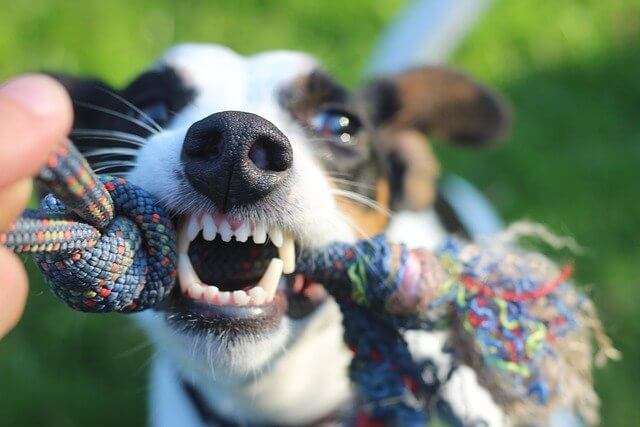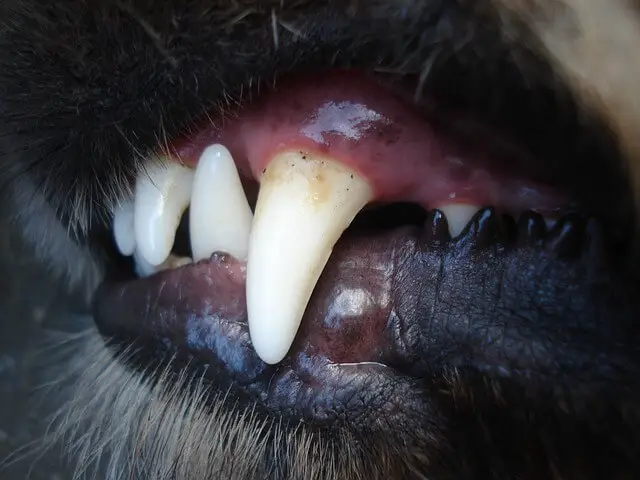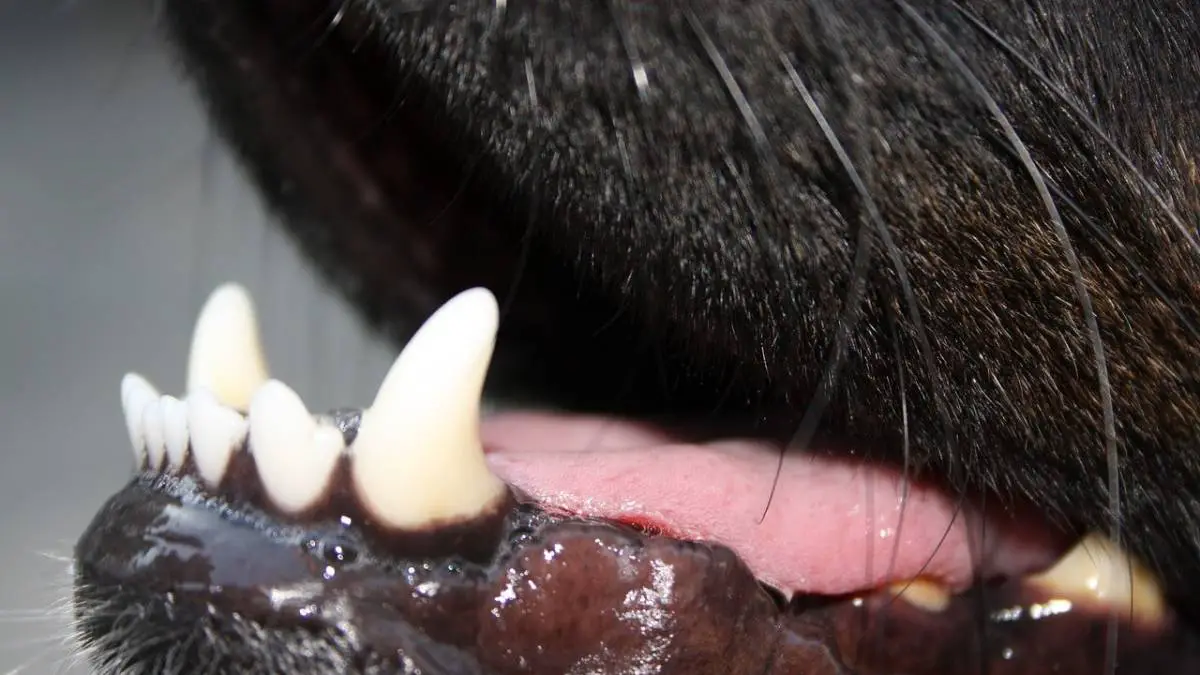Do You Know How Many Teeth Do Dogs Have?
19.09.2022.
Dog teeth and dental care are often overlooked by dog owners. We decided to write about different dog teeth and their purpose for you to better understand the anatomy of dog teeth. As you may think, dogs have different tooth types that serve different purposes.
How many teeth do dogs have?
Dogs have 42 permanent teeth that start to appear when the dog is 3-7 months old. Their top jaw will contain 20 teeth, and their bottom jaw 22. Here is a dental chart of dogs' mouths where you can see locations and all types of dog teeth.

As you may notice on the chart, adult dogs have 4 different types of teeth. Every type serves a different job and will help your dog crush food with chewing.
These are the 4 types of teeth that every dog has
- Incisors
- Canines
- Pre-molars
- Molars
RELATED: Dog Teeth Cleaning - How to Keep Your Dog's Teeth Clean?
1. Incisors
The teeth that are located in front are called incisors. Both the lower and upper jaw consist of 6 incisors. The primary purpose of these teeth is to grab things, but they could also serve for chewing. These teeth are small, and every tooth has only one root.

2. Canines
These are maybe the most famous dog teeth, and everybody can recognize them. Canines are the longest teeth in dogs' jaw. Every dog has 2 canines in the lower and 2 in the upper jaw. As you might notice, these teeth are curved to provide a better grip for your dog. Like the incisors, canines also have only one root per tooth.

RELATED: How Dangerous is Tartar in Dogs
3. Pre-molars
Behind the canines come premolars. Every adult dog will have 16 premolars – 8 in the lower jaw and 8 in the upper jaw. They are used for crunching and chewing food. Unlike incisors and canines, premolars can have even three roots per tooth.
4. Molars
Molars are located in the back of the dog's mouth. The upper jaw consists of 4 molars, while the lower jaw has 6. Dogs will use molars to crunch food into smaller pieces that will be easier to digest. Like premolars, molars can also have one, two, or three roots per tooth.
RELATED: Dog Bad Breath: What To Do?
Why is it important that you take care of your dog's teeth?
The main reason to regularly clean dog teeth is their health. The newest study has found that nearly 80% of dogs younger than three will show signs of periodontal disease. The other reason is breath quality. Dogs with bad dental routines can have a bad smell in their mouths, which will be caused by tartar and plaque.
Regularly caring for your dog's teeth will reduce the risk of your dog losing teeth because of some disease. If you don't know how to provide good dental care for your dog, we advise you to consult your vet.
RELATED: Periodontal Disease in Dogs | Causes & Treatment
World Dog Finder team







Share